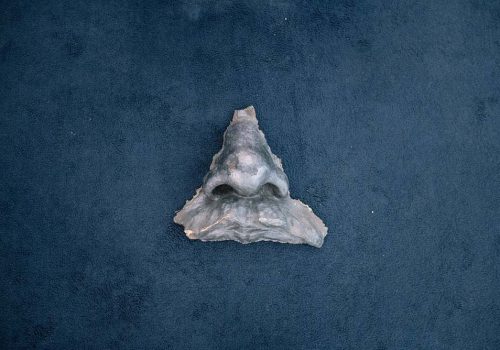During their journey across Ukraine, the photographer Niels Ackerman and his collaborator Sébastien Gobert, were tracking down toppled statues of the father of the October 1917 revolution who was still the outmoded emblem of the memory of those killed in the USSR. The two reporters tell their story in Looking for Lenin, a series of photographs now on view from April, 20 to June, 24 at The Lumiere Brothers Center for Photography in Moscow.
Sometimes a nation no longer tolerates a totem figure of its past. The country has changed. People take down the old symbols and file them away in strange drawers full of future dreams. It was just such a dream path that the two companions, Niels Ackerman and Sébastien Gobert followed in Ukraine, where they live. They have explored the effects of the “Revolution of Dignity,” a sort of catalyst for the toppling of Lenin and other Soviet monuments around the country since the 1990s, a movement that was later absorbed into the laws on decommunization. And, of course, some don’t dither with symbol: Lenin decapitated.
Such scenes are a familiar sight in Ukraine: a statue is broken down with a bulldozer, trowels, shovels, or spades, or whatever one needs to pick away a souvenir or an item for sale. It must be said that Ukrainian cities are worth their weight in gold — or in any case, bronze — and people will carve them up to make a few bucks. A security agent interviewed by Sébastien Gobert reacted with disgust: “I live on a ridiculous pension. … And here I am, watching over Lenin!”
“It’s ironic,” he admitted, but the “irony” captured in Niels Ackerman’s photographs is conveyed in all its striking beauty as well as its incongruity. Where did all the decapitated Lenins go? To what cemeteries? Tragic or comical, ordered or caring… There aren’t enough words or images to describe this incredible task of deconstruction.
The bells
The heads from Lenin’s statues are a good example: piled up one on top of the other in the trunk of a car, as if they were a corpse to be dumped somewhere, or yet a pirate’s treasure that must be buried in a hurry. Or the other way around: you have a base, the torso of a man of clearly considerable stature — a writer or a statesman — but the head is missing. In yet another photograph, some pranksters had replaced the head with that of Dark Vador.
Not too long ago, Sadam Hussein’s statues were coming down in Iraq. But far away from there, another event had occurred that is even more pertinent to what Sébastien Gobert and Niels Ackerman were after: during Lenin’s Red Revolution, the Communists took down the bells from Orthodox churches, symbols of the Tzar’s power, and smashed them.
Today, however, in a shattered Ukraine, what should be done with the delapidated relics that stand as a reminder of the past century’s suffering? The two reporters conducted a visual investigation, gathering vibrant testimonies which are revealed in their elegant book, Looking for Lenin. Here we can take pleasure in looking at weeds being pulled from an overly imposing base or indulge in a Good bye Lenin type of nostalgia, like in the eponymous film which tells of the difficulty of saying farewell to the communist era, still filled perhaps with dreams that held the immense Soviet republic together. Finally, therein lies perhaps the most useful key to the paradox of this oeuvre.
Jean-Baptiste Gauvin
Jean-Baptiste Gauvin is a journalist, writer, and stage director. He lives and works in Paris.
Niels Ackermann & Sébastien Gobert, Looking for Lenin
April 20 to June 24, 2018
The Lumiere Brothers Center for Photography
Bolotnaya Naberezhnaya, 3, стр. 1
Moskva
Russia, 119072
http://www.russianmuseums.info/M3061
















